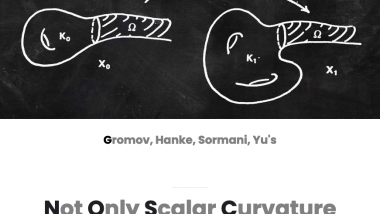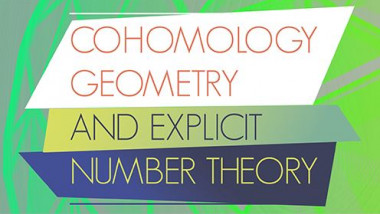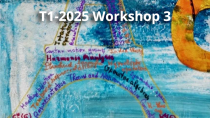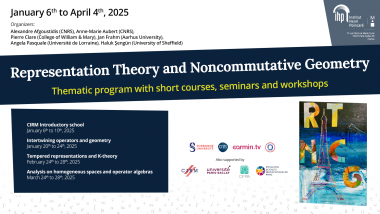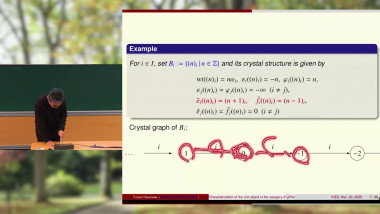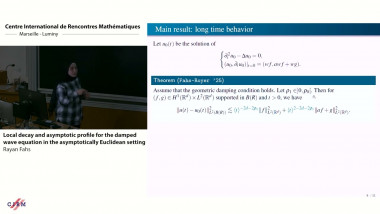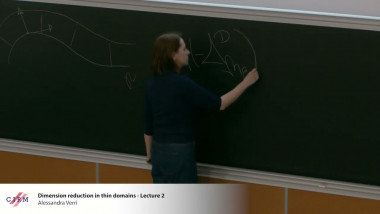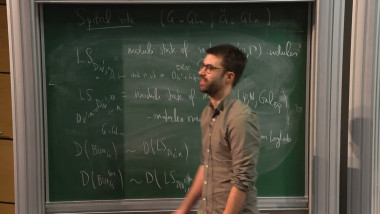A trace Paley-Wiener theorem for $\mathrm{GL}(n, F)\backslash \mathrm{GL}(n, E)$
This talk is related to the relative Langlands' program, which aims to extend the classical Langlands' program to spherical varieties. In the classical case, a well-known trace Paley-Wiener theorem was given by Bernstein, Deligne and Kazhdan in 1986. It gives a characterization of the functions
$$\pi \mapsto \mathrm{Tr}(\pi(f)),$$
with $G$ a reductive $p$-adic group, $\pi$ ranges over isomorphism classes of smooth irreducible representations of $G$ and $f \in C_c^\infty(G)$. We will explain how to extend this to the relative case. That is when $E/F$ is a quadratic extension of $p$-adic fields, the theorem is a scalar Paley-Wiener theorem for relative Bessel distributions on $\mathrm{GL}_n(F)\backslash \mathrm{GL}_n(E)$. These distributions are relative character of the form
$$\pi\mapsto I_\pi (f), \ f\in C_c^\infty(\mathrm{GL}_n(E)),$$
as $\pi$ ranges over $\mathrm{GL}_n(F)$-distinguished irreducible tempered representations, and are constructed from a $\mathrm{GL}_n(F)$-invariant functional and a Whittaker functional. We will explain how by using the local Langlands correspondence, and the base-change from a unitary group, the relative characters can be described as elements of the "generic" Bernstein center of the unitary group $U(n)$.
